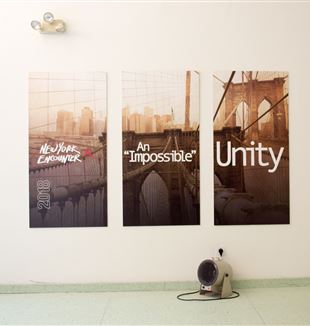
Major New York Catholic pow-wow seeks unity in a polarized America
"We try to pinpoint something that is urgent, burning, hurting or even a source of hope." Christopher White recapitulated the 2018 New York Encounter's highlights.The following article first appeared in CRUX on January 15, 2018.
A major Catholic get-together took place in New York City this past weekend, but it was hardly anyone’s idea of some holier-than-thou event. Gales of laughter unfolded in the lobby over food and drink, while outside of the venue, enough cigarette smoke was emitted that one may temporarily think they had walked upon the scene of the fire.
That, perhaps, is what happens when you bring together thousands of smart, fun-loving Catholics, many of them young, and all apparently devoted to that bit of wisdom from Hillaire Belloc: “Wherever the Catholic sun doth shine / There’s always laughter and good red wine.”
That’s the scene of the New York Encounter, an annual event organized by the Catholic lay movement Communion and Liberation.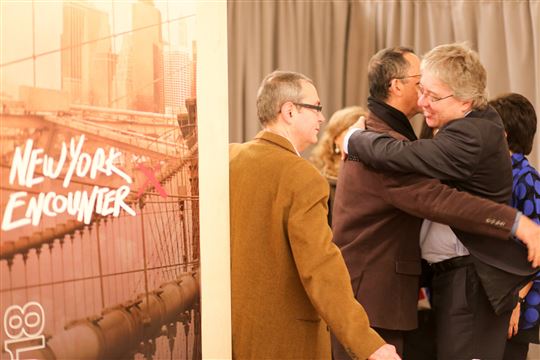
This year’s chosen theme - “An ‘impossible’ unity” - served as a nod to the severe fragmentation that exists both within the country and the Church. And while the subject matter was serious, the event served as a reminder that for all of its stereotypes, the Church is at its best when it offers a public witness of joy, even in difficult times.
While the 10th annual Encounter included discussions on economic development, identity politics, the shared values of the Abrahamic faiths, an exhibition on the life of Dorothy Day, live music and dance performances paying tribute to the life of Dr. Martin Luther King, Jr., and special addresses by high-ranking Catholic prelates, the primary focus of this event is the encounter between persons.
Young adults make up the bulk of attendees, but it’s a multi-generational affair - complete with newborns and a sizable contingent of senior citizens that represent a true cross-section of humanity. While the weekend was chock full of official lectures, performances, and talks, the dynamism of the New York Encounter overflowed into the streets and nearby bars into the wee hours of the morning, long after the official programming concluded.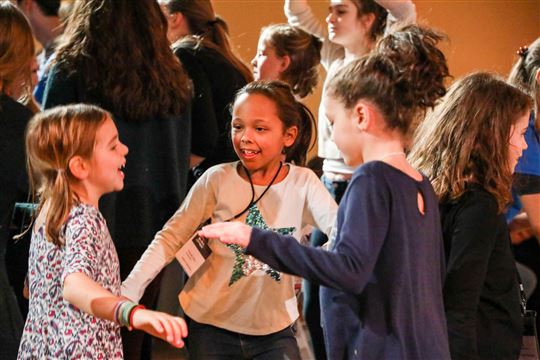
For organizers, that’s exactly how things should be.
Although much thought is given to the event’s official programming, it’s the unplanned and impromptu conversations and relationship building that fuel this event each year and have attendees traveling across the country, and indeed the world, to take part in it.
“This is what heaven must be like,” remarked one attendee walking through the pavilion on Saturday. “You just keep bumping into all of the best attendees, and you want to stop and have lunch with everyone, but you have to force yourself to just keep going.”
“An ‘Impossible’ Unity”
Maurizio Maniscalco, president of the New York Encounter, said that each year the Encounter’s organizers seek to find a theme that is “something that we perceive around us as a burning issue or a wound.”
“We try to pinpoint something that is urgent, burning, hurting, or even a source of hope,” he told Crux, and this year, a response to polarization seemed the obvious choice.
Maniscalco, who is Italian-born but has called the United States home for the past twenty-five years, says he’s reflected a lot about the way the country has changed since he first arrived.
“One of the things that struck me the most when I came to the states is that in Italy, it’s an extremely polarized and ideological country. I was shocked and surprised to discover that in the United States of America, the ideological level was extremely low compared to Europe,” he recalled. “You could vote for a candidate for a president and if the other candidate wins then that’s still my president because it’s for the good of the country.”
He believes that’s no longer the case-but doesn’t believe the United States is past the point of no return. Hence the theme, “An ‘impossible’ unity,” is not a question mark, but rather a provocative declaration.
“This is a young society,” said Maniscalco. “It has vibrancy but it also has fragility. It’s like a young flower. It can grow beautifully, but if the wind blows hard, the roots may not be strong enough to hold up. So unity is needed.”
“Is it possible that we can build something together because you voted for Trump and I didn’t? Or if you’re a woman and I’m a man? Or if you’re black and I’m white?” he asks.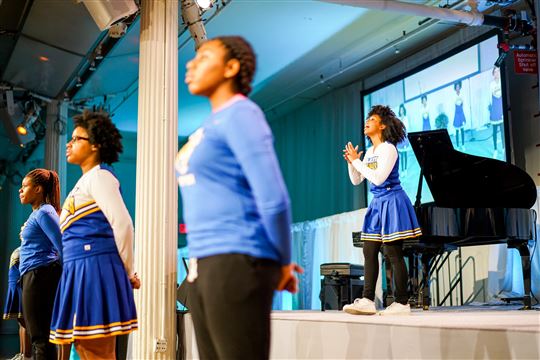
For participants in the Encounter, they believe that if personal relationships are elevated above political responses, then indeed, unity is a possibility.
“The strength of the Encounter is that it is an encounter,” said Maniscalco. “It’s a place that opens up the doors for all people of goodwill.”
Making faith relevant to life
Founded in 1954 by the Italian priest Luigi Giussani, Communion and Liberation is a lay driven Catholic movement present in nearly 100 countries. While there’s no official membership count, its rosters would easily rank in the tens of thousands, who are committed to the shared cause of “forming its members in Christianity in order to make them coworkers in the Church’s mission in all areas of society.”
For Giussani, his mission was guided by a commitment to making faith relevant to life. While the organization was considered conservative or traditional at its inception, today it’s widely viewed as a fairly centrist movement within the Church, more known for engaging in philosophical questions than in politics, be they theological or global.
The ciellini, as they are known, remain anchored in their Italian roots but the New York Encounter has become one of its biggest international gatherings, perhaps second only to their annual Rimini Meeting which takes place every August.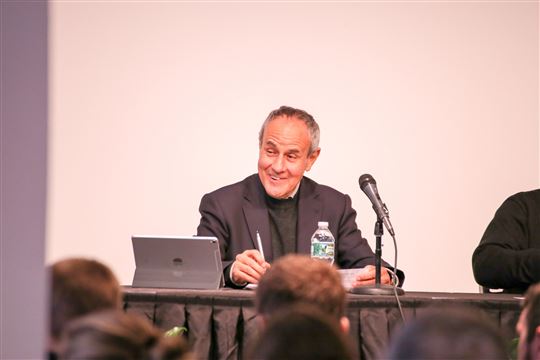
After witnessing the friendships that were formed in Rimini each year and the power of that cultural gathering, a small group of ciellini were eager to replicate a similar experience stateside. Initially the organizers began to combine a few of their cultural offerings together for a multi-day event, which would later give birth to the Encounter.
While its members are tightknit, the movement remains outward focused and eager to welcome newcomers-as is evidenced by the fact that the attendance of the Encounter is said to grow twenty-five percent each year.
While this year’s event is estimated to cost nearly $400,000, Maniscalco told Crux that ninety percent of the costs are related to the venue rental, as speakers all agree to participate in the event for free. He’s also pleased to report that volunteers reached an all-time high with over 370 individuals committing their time for the weekend.
“It a lot of work, effort, but it’s a great joy,” said Maniscalco. “Sure, we’re exhausted and we barely break even, but it’s of course, worth it.”
“Our hope is, come to my house. Let’s talk, share our lives, share a meal, so that we may rediscover the joy of diversity,” he said.
That experience certainly rings true for Justin Welter, a 34-year old member of the movement who lives in San Francisco. While Welter works in the tech industry, he told Crux that it’s Communion and Liberation that helps him remain anchored in reality-and part of the reason he travels to New York every January for the event.
“It’s a starting point for me for the year. My friends are really important and the witness of the friendships from Communion and Liberation are often the foundation of the year for me,” said Welter.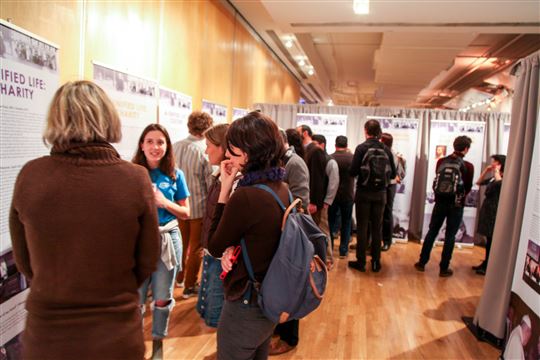
Welter, who first discovered the movement twelve years ago while studying in Milan, told Crux that his Italian host greeted him on his first day in Italy by telling him “It’s not studying Italian that’s important, it’s love for Jesus Christ.” That simple, but very potent introduction to the movement led him to get plugged into Communion and Liberation when he returned stateside.
“It’s refreshing because there’s a lot challenges within our culture where we isolate politics, faith, art, music, and culture and put them into boxes. Communion and Liberation is an opportunity for me to see that they’re all really interrelated,” he said.
“If a man died and rose again from the dead 2,000 years ago, that affects everything. I see from the talks that we have about economics, politics, and art that that’s true,” Welter added.
‘A sense of openness and diversity’
Father Richard Veras, director of pastoral formation at St. Joseph’s Seminary in New York, was also on hand for the Encounter, along with 45 diocesan seminarians.
Veras first met the movement as a lay person in 1988 before being ordained a priest in 1996.
“My attraction to Communion and Liberation was just meeting it,” he told Crux. “Father Giussani just has this claim that Christ is really present in the Church and that he continues in the flesh in the Church so that I can meet him today. The New York Encounter is just an expression of that.”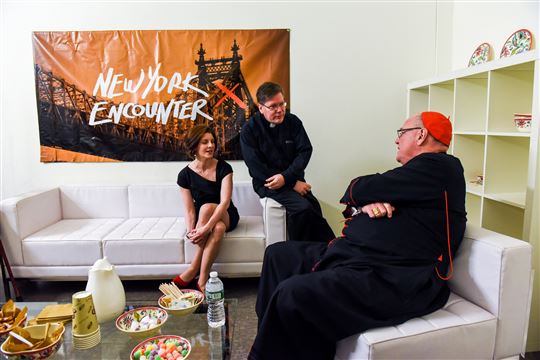
Veras said he was eager to expose his seminarians to both the programming of the Encounter, but also the experience of just engaging with attendees so that they might have an encounter of their own.
“There’s a sense of openness and diversity from college professors to a stay at home mom giving a talk on Dante,” said Veras. “Even with the noise and chaos, you just see the Church alive and vibrant. To see the Church alive is to see Christ. Not as the subject of theology but as the center of life.”
Daniella Pavon, a recent transplant to New York from Plano, Texas, now in her final year at the Fashion Institute of Technology, said that Communion and Liberation has been central to her faith experience and part of the reason she moved to the city.
She met the movement nearly eight years ago in high school when she was invited on a retreat by a friend. By the end of the weekend, she recalled, “I hadn’t understood much, but I knew I needed to stick around and find out.”
Reflecting on the weekend, she says the highlight was a presentation by Rose Busingye, founder of the International Meeting Point, an organization that cares for people with AIDS in Kampala, Uganda.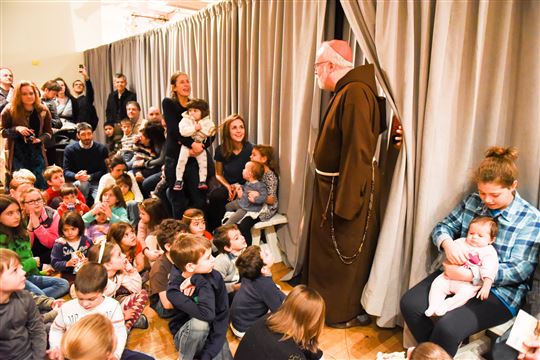
Pavon recalled Busingye’s line that “Christ is with us so that our nothingness is not for nothing.”
“For me, that line is what connects everybody,” said Pavon. “This really huge desire for the little nothingness of ourselves to be something and to have value.”
“This desire to really be loved is what unifies all of us here,” she said.#NewYorkEncounter